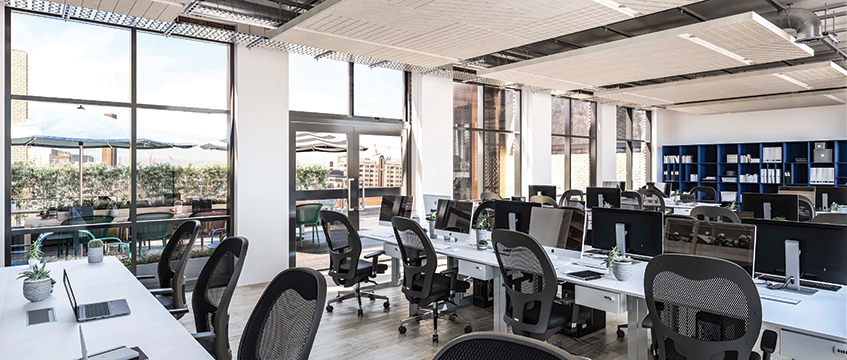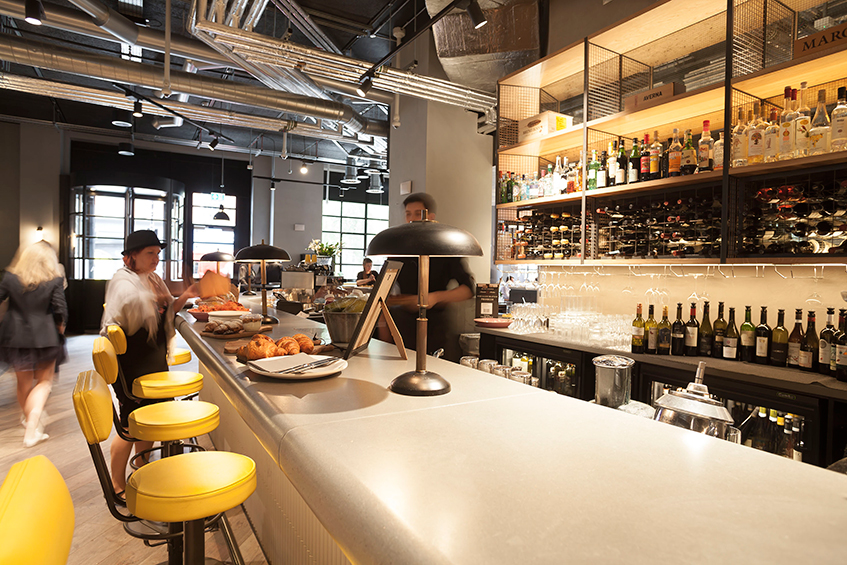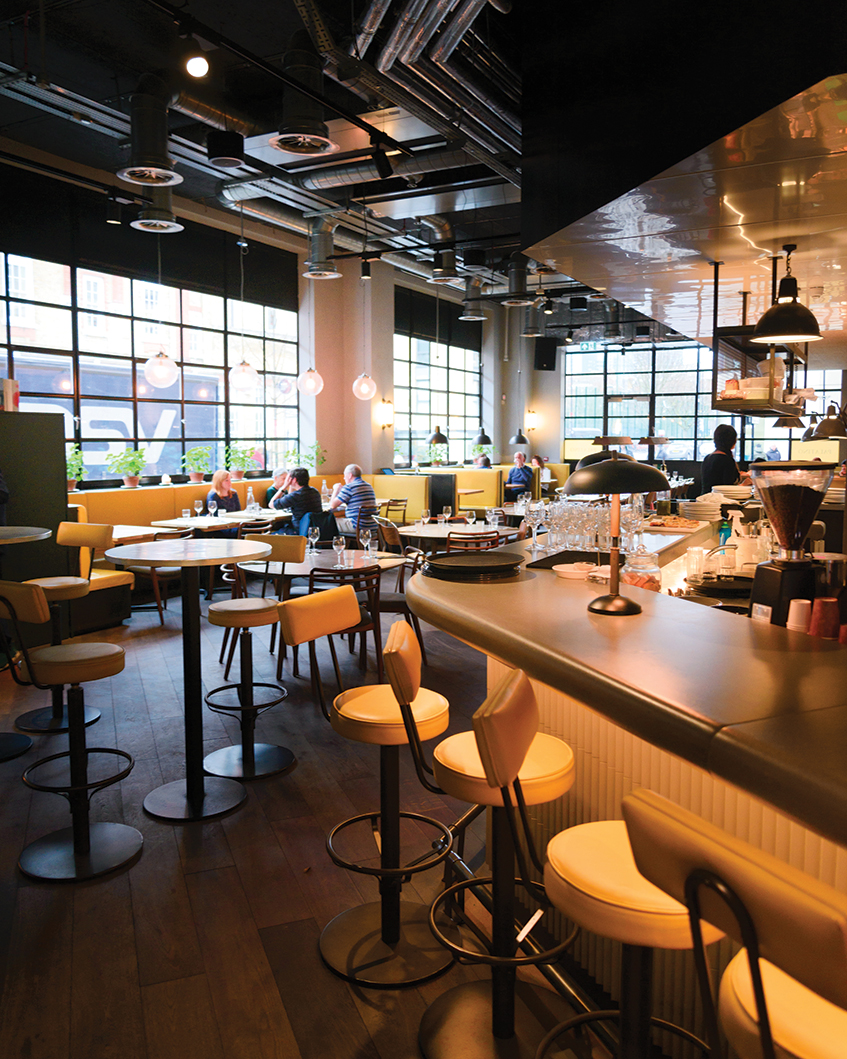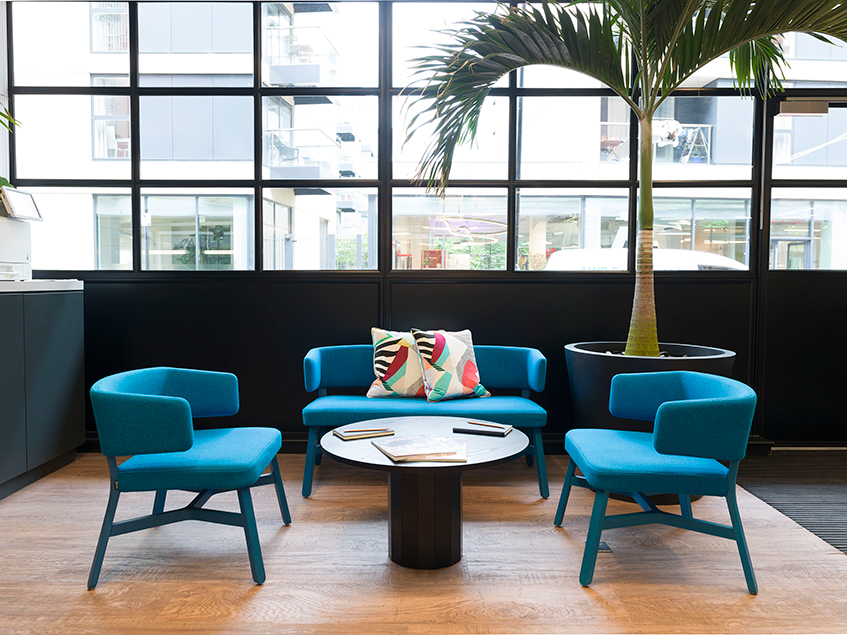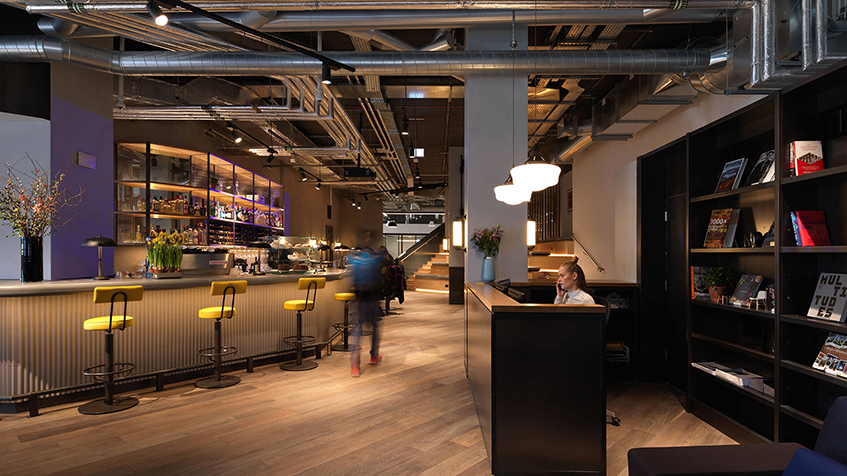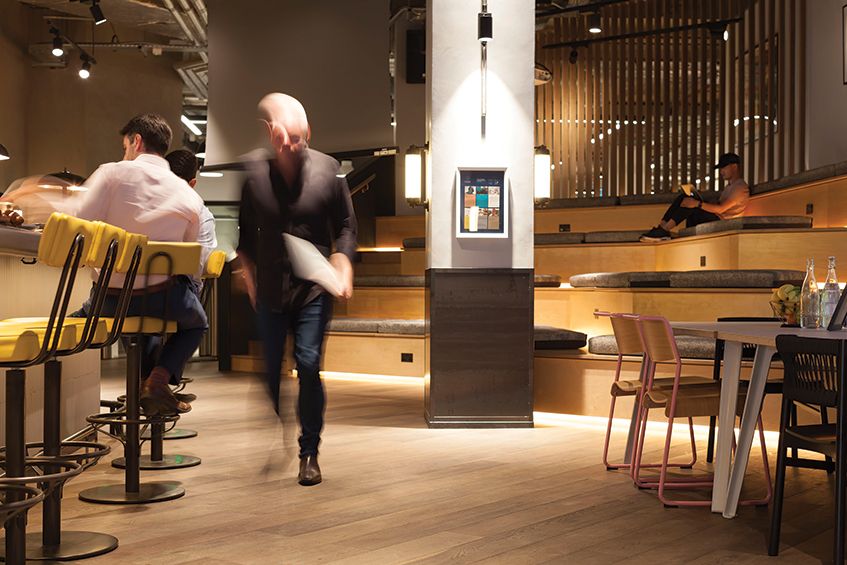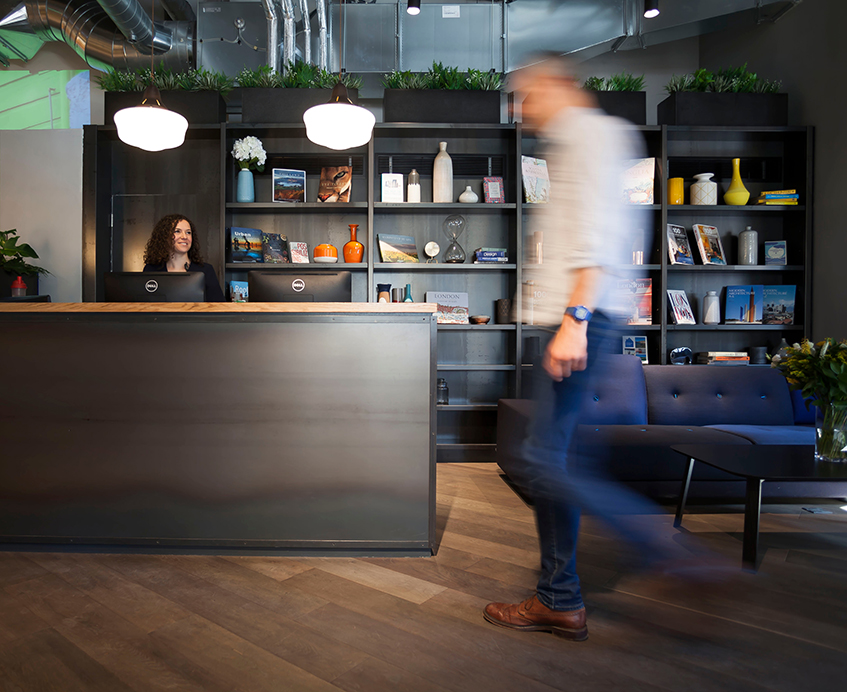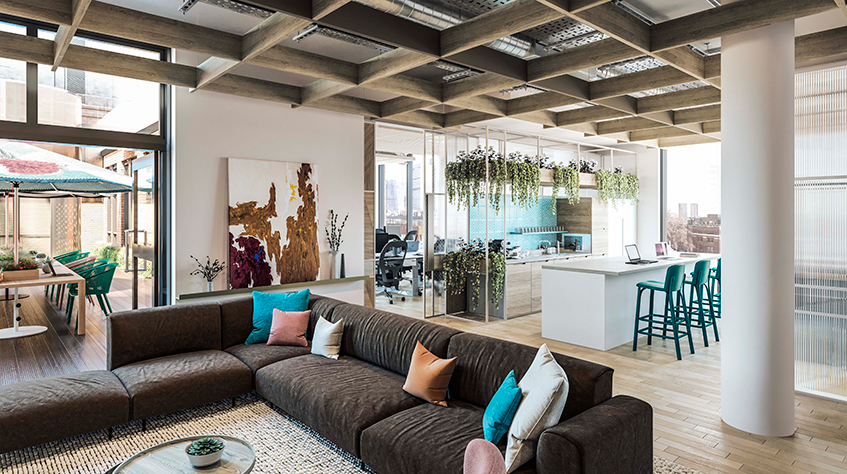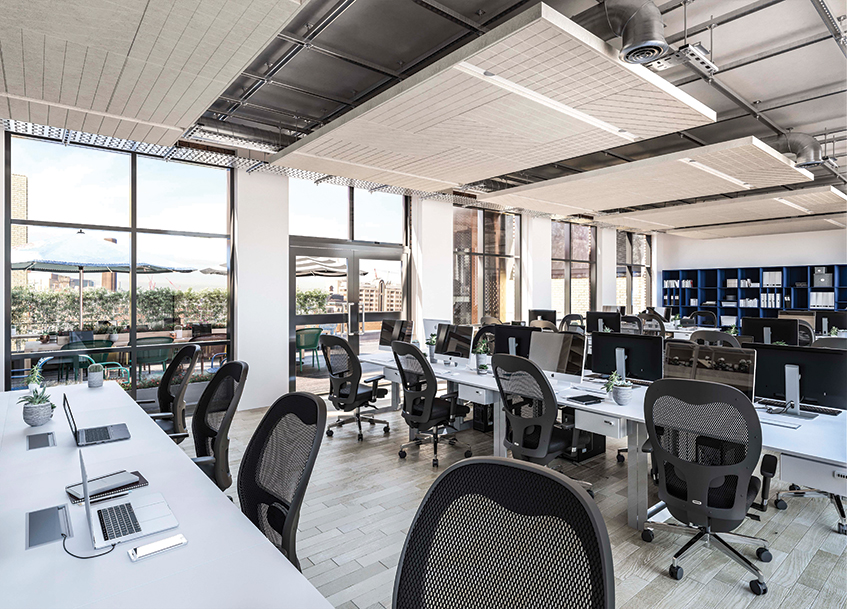“We hate office lobbies,” says Enrico Sanna, co-founder of Fora, the Brockton-backed shared workspace provider. “I haven’t seen a lobby that excites me except for the Bloomberg lobby [the Norman Foster-designed City headquarters that opened last year]. Most are terrible.”
The statement is typical of the brand with an ambition to challenge accepted philosophies about what occupiers want from workspace. At its newest planned location, the former Hearst Magazines head office at 33 Broadwick Street in Soho, W1, the ground-floor lobby will be replaced by an events space and radio station broadcasting live shows.
Sanna, former global head of operating assets at Deutsche Bank, who oversaw the recovery of many hotel and hospitality assets from the bank’s bad loan portfolio after the financial crisis, decided after leaving banking to become an entrepreneur as there was more opportunity to apply his skills to workplaces, which had been more or less “stuck in the same place for the last 100 years”.
David Marks, co-managing partner at Brockton Capital, which set up and owns Fora with co-founders Sanna and Katrina Larkin, co-founder of music festival and events business The Big Chill Group, says the brand offers the “third layer” he thinks is missing from other serviced operators on top of “cost and convenience” – “culture, community or curation”.
Since opening its first location last year at 71 Central Street in Clerkwenwell, EC1, Fora has amassed a 500,000 sq ft freehold portfolio across London. It has opened a second Clerkenwell workspace at 9 Dallington Street, EC1, and plans to open a further four buildings this year and at least four buildings next year (see box). Confirmed locations include Borough, Fitzrovia, Spitalfields, Shoreditch, Ladbroke Grove and Kentish Town.
Curating workspace
Fora employs 200 people and has a team devoted to customer experience, with one employee’s job solely consisting of filling her diary with lunches and coffees with members to make sure they personally know every one of them.
Fora tests all the spaces before formally opening them to members. At 9 Dallington Street, PhD students were given free use of the building for several weeks and provided feedback so the company could be sure standards were being met and staff were fully trained.
Larkin, who co-founded The Big Chill in 1994, growing the festival to 50,000 people before deciding it was time for a career change in 2010, uses her “black book” of creative contacts to get members into cultural events she thinks they might be inspired by and selects books and magazines for their chillout spaces based on the interests of the people based there. It is trialling sleep pods at Central Street to see if members use them and offering a wellbeing programme ahead of a triathlon event. They also help to make it a stimulating workplace through educational talks on wide-ranging subjects from artificial intelligence to sustainable cities, in addition to members’ breakfasts and biannual parties for the whole network.
“It’s responding to the residents who say ‘we want you to keep going in that direction’,” Larkin says.
They pay a premium for the service, with the monthly rental payment for either a flexible desk, owned desk or owned office priced at around 15-20% higher than other workspace providers.
Sanna says one common thread between Fora’s occupiers is they are all “really focused”, with members ranging from creative businesses to a company that monitors cryptocurrencies on behalf of governments. “Why would they come and share an office people ask themselves? Because they know that inside the space is their space. We are very serious about privacy, security, and everything else.
“There is no ping pong table across from the office. There is no beer keg. This is a workspace. Now, we have a bar at Central Street, and on our top floor at Dallington Street there is a bar and restaurant. We throw parties. But at the right moment, in the right space.”
Benefits of scale
Fora plans to continue to buy more buildings in different parts of the city to add to the network. It is also looking at buildings of up to 70,000 sq ft – marginally bigger than its first circa 40,000 sq ft locations.
Marks says: “Scale is important because when you’re pitching to large corporate occupiers, it’s not a question of, ‘you don’t fancy Soho, how about Notting Hill or Borough?’ Now you’re saying, buy 300 membership cards for your entire team and they can work from wherever. If they live in east London, for example, they can work in Spitalfields.”
More members also means more data, which Marks says means Brockton can then go to a corporate occupier and say, based on its analysis of its own members, that you are currently in 40,000 sq ft but only need closer to 20,000 sq ft on a flexible lease where you don’t have the lease liability on your balance sheet, you can shrink and expand easily, and your staff can work from wherever across the Fora network.
Marks believes London needs less office space than it currently has, as occupiers become more economical with their use of space. That means there will be “winners and losers” among office buildings. And the ones where the floorplates are working harder will be the winners.
Fora’s locations
Open
- Clerkenwell – 71 Central Street, EC1 and 9 Dallington Street, EC1
Planned
- Soho – 33 Broadwick Street, W1
- Borough – 180 Borough High Street, SE1
- Fitzrovia – 16-19 Eastcastle Street, W1
- Spitalfields – Folgate Street and Princelet Street
- Shoreditch – New Inn Yard, EC2
- Ladbroke Grove – 342-344 Ladbroke Grove, W10
- Kentish Town – Spring Place, NW5
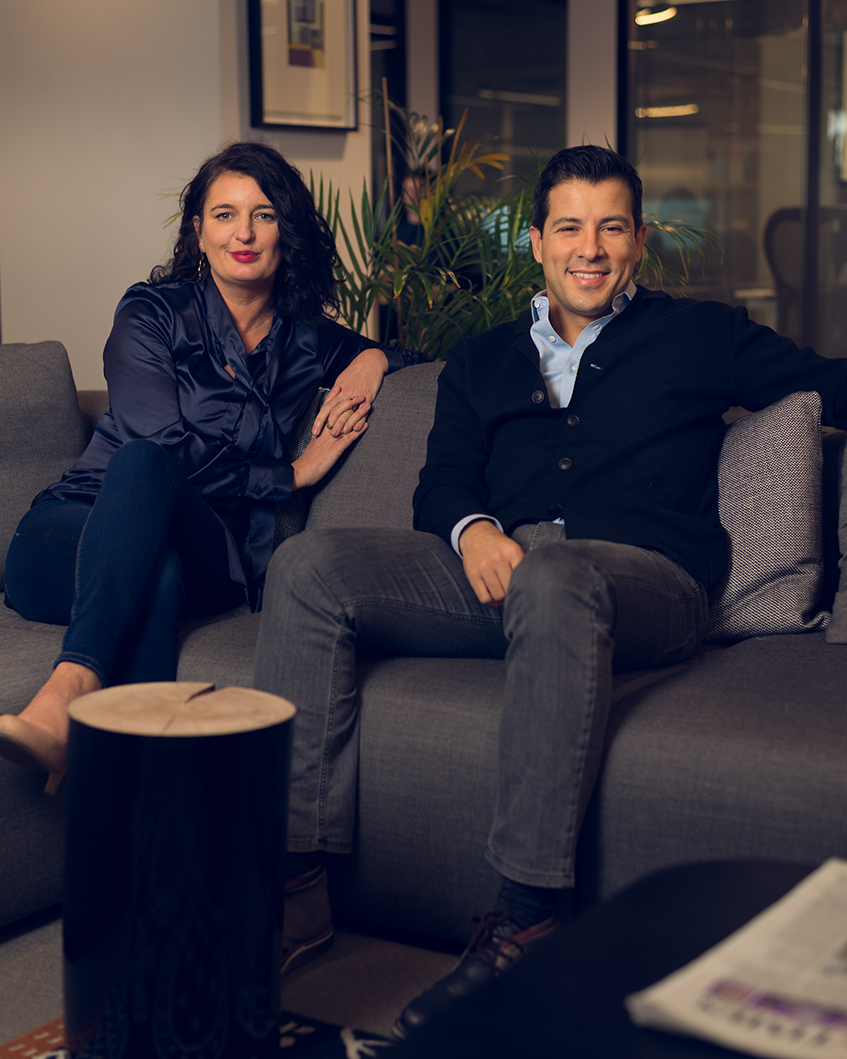
Doing things differently: Fora’s philosophy
- No (ordinary) office lobbies
- Allow people to decide on the sight lines of their desks – whether it’s looking out of the window or towards their team
- Offer noise cancelling at different levels – some people like to hear the buzz, some people like complete silence
- Curate bookshelves according to members’ interests
- Keep locations to a maximum of 60,000-70,000 sq ft to ensure people feel at home and can build relationships
- Host parties and networking events but at the right time and appropriate setting – not at lunchtime when people want to work
- Encourage curious learning – not just sitting in a classroom learning coding, but making sushi or listening to local artists describe their work
To send feedback, e-mail Louisa.Clarence-Smith@egi.co.uk or tweet @LouisaClarence or @estatesgazette







